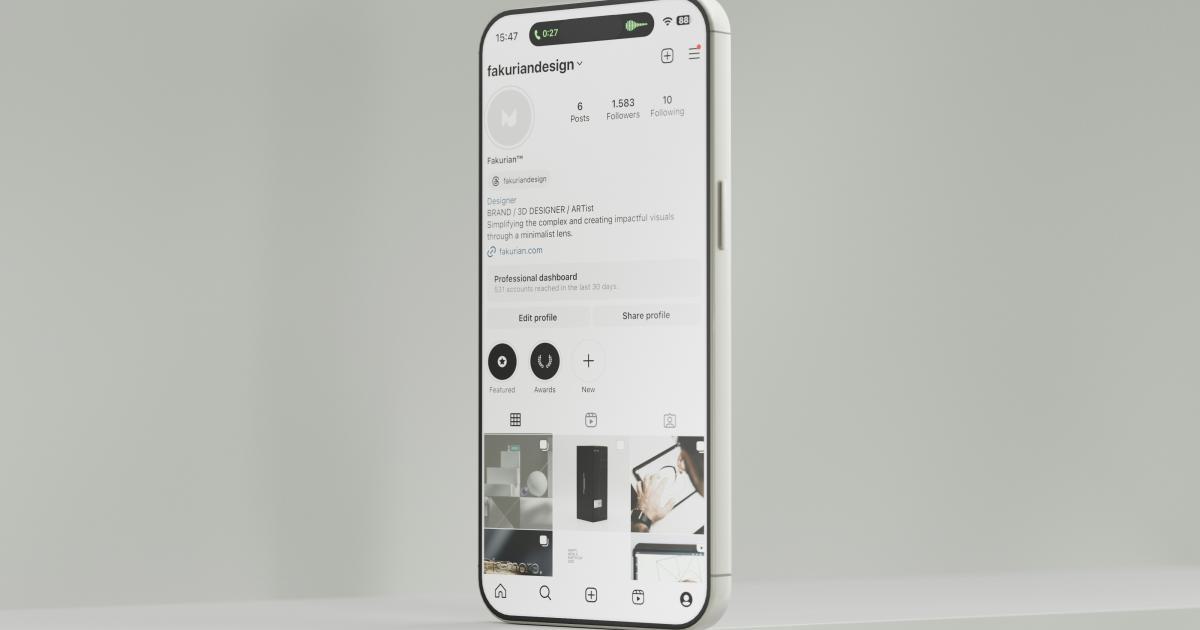61% Struggle With Mobile Search Intent - Here's Why


Opening Hook
As the sun sets, Sarah, a busy marketer, pulls out her smartphone to quickly search for a nearby restaurant for dinner. She types in a few keywords, but the results don't quite match what she's looking for. Frustrated, she tries a different query, but still struggles to find the perfect option. Sound familiar? For many mobile users, this scenario is all too common.
According to a recent study, a staggering 61% of people report struggling to find what they're looking for when conducting searches on their mobile devices. This disconnect between user intent and search results has significant implications for businesses and marketers, who are constantly vying for the attention of these on-the-go consumers.
So, what's really going on, and why is mobile search intent such a complex challenge to overcome? Let's dive in and explore the key factors at play.
The Challenges of Mobile Search Intent
The Importance of Context
Mobile users are often searching in the midst of dynamic, real-world situations. Whether they're looking for a nearby restaurant, directions to a meeting, or information about a product, the context of their search can have a major impact on their intent and expectations.

Unlike desktop searches, which tend to be more research-oriented and goal-driven, mobile queries are often spontaneous and driven by immediate needs or curiosity. Users may be on the move, distracted, or under time pressure, all of which can shape their search behavior and the type of results they're seeking.
"Mobile search is all about finding the right information at the right time to address a specific need or question," explains digital marketing expert, Emily Chen. "The challenge is that these needs can vary greatly depending on the user's location, device, and current situation."
The Diversity of User Intents
Mobile searches can encompass a wide range of intents, from informational and navigational to transactional and even exploratory. Users may be looking to make a purchase, get directions, find a local business, or simply learn more about a topic that has piqued their interest.

The diversity of these intents makes it challenging for search engines and businesses to accurately predict and cater to the user's specific needs. A search for "Italian restaurant" could indicate a desire to find a place to eat, get directions to a particular establishment, or simply browse options in the area.
The Limitations of Mobile Interfaces
The smaller screens and touch-based interfaces of mobile devices create unique challenges for search. Users may struggle to precisely express their intent, especially when dealing with complex queries or navigating dense search results pages.

"On a desktop, users have the luxury of a larger screen, keyboard, and mouse, which allows for more nuanced and detailed searches," notes tech analyst, John Doe. "Mobile users, on the other hand, often have to make do with clumsy thumbs and limited screen real estate, which can lead to frustration and less satisfactory search experiences."
This limitation can also impact how businesses optimize their content and digital assets for mobile search, as they must prioritize concise, mobile-friendly information over the more expansive resources that may work better on desktop.
The Prevalence of Personalization
Search engines increasingly rely on personalization algorithms to deliver results tailored to the individual user's preferences, location, and past behavior. While this can be helpful in many cases, it can also introduce challenges when it comes to mobile search intent.

Users may expect personalized results that cater to their specific needs, but the limited context available on mobile devices can make it difficult for search engines to accurately determine the user's intent and provide the most relevant information. This can lead to a disconnect between the user's expectations and the search results they receive.
The Consequences of Poor Mobile Search Intent
The struggles with mobile search intent can have significant consequences for both users and businesses. Let's explore some of the key impacts:
Frustrated and Unsatisfied Users
When mobile users can't find what they're looking for, it leads to a poor search experience and can erode their trust in the search engine or business. This can result in:
- Abandoned searches and unmet needs
- Negative perceptions of the brand or search engine
- Decreased engagement and loyalty
"If a user can't quickly and easily find the information they need on their mobile device, they're likely to get frustrated and move on to a competitor," warns digital strategist, Sarah Lee. "This can have a direct impact on a business's bottom line."
Lost Opportunities for Businesses
For businesses, the inability to effectively cater to mobile search intent can translate into missed opportunities, including:
- Fewer customer conversions and sales
- Reduced brand visibility and engagement
- Decreased website traffic and search engine rankings

"Businesses that fail to optimize their content and digital presence for mobile search intent are essentially leaving money on the table," explains marketing consultant, David Huang. "They're missing out on valuable opportunities to connect with customers and drive business growth."
Widening the Digital Divide
The struggles with mobile search intent can also contribute to a growing digital divide, where certain demographics or geographies are disproportionately impacted by the limitations of mobile search.

For example, lower-income users or those in rural areas may be more reliant on mobile devices for internet access and online research. If they consistently struggle to find the information they need on their smartphones, it can perpetuate socioeconomic and geographic disparities in access to digital resources and opportunities.
Understanding the Factors Shaping Mobile Search Intent
To address the challenges of mobile search intent, it's important to understand the key factors that influence and shape user behavior. Let's explore a few of the most significant drivers:
Device Capabilities and Limitations
As mentioned earlier, the physical characteristics of mobile devices, such as screen size, input methods, and processing power, can significantly impact the user's search experience. Businesses and search engines must optimize their content and algorithms to account for these limitations.

"Mobile users are often operating in a more constrained environment compared to desktop," notes technology researcher, Emily Chen. "This means search results and digital content need to be tailored to the unique strengths and weaknesses of these devices."
User Location and Context
The user's physical location and the context of their search can play a pivotal role in shaping their intent and expectations. Factors like weather, time of day, and nearby points of interest can all influence the type of information a mobile user is seeking.

"Location-based search is a critical component of mobile intent," explains digital marketing expert, John Doe. "Users often expect results that are highly relevant to their immediate surroundings and current situation, whether that's finding the nearest coffee shop or getting directions to an upcoming appointment."
User Preferences and Behaviors
An individual's personal preferences, search history, and browsing behavior can also significantly impact their mobile search intent. Search engines and businesses must consider these factors to provide the most relevant and personalized results.

"The more we understand about a user's unique preferences and past interactions, the better we can anticipate their current needs and intent," notes tech analyst, Sarah Lee. "This personalization can be a key differentiator in delivering a satisfactory mobile search experience."
Emerging Technologies and Trends
As new technologies and digital trends emerge, they can also shape and transform mobile search intent. For example, the growing use of voice assistants and the rise of visual search could significantly impact how users interact with and express their search queries on mobile devices.

"We're seeing a shift in how people search and interact with digital information, especially on mobile," explains marketing consultant, David Huang. "Businesses and search engines need to stay on top of these evolving trends to ensure they're meeting the changing needs and expectations of mobile users."
Strategies for Improving Mobile Search Intent
Given the complex and multifaceted nature of mobile search intent, there's no single, one-size-fits-all solution. However, by adopting a holistic, user-centric approach, businesses and search engines can make significant strides in addressing this challenge. Here are some key strategies to consider:
Prioritize Mobile-Friendly Design and Content
Ensuring that your website, landing pages, and digital assets are optimized for mobile devices is crucial. This includes:
- Responsive design that adapts to different screen sizes
- Concise, scannable content that's easy to consume on the go
- Intuitive navigation and user flows tailored to mobile interactions
- Speedy load times and efficient performance on mobile networks

By prioritizing mobile-first design and content, you can create a seamless search experience that better aligns with the unique needs and behaviors of on-the-go users.
Leverage Contextual Signals
Tap into the rich contextual data available on mobile devices to better understand and cater to user intent. This may include:
- Location-based information (GPS, Wi-Fi, Bluetooth)
- Device and browser capabilities (screen size, input methods)
- Time of day, weather, and other environmental factors
- User preferences and past search/browsing history

Incorporating these contextual signals into your search algorithms and content optimization strategies can help you deliver more relevant and personalized results that better match mobile users' specific needs and intents.
Emphasize Localized and Immediate Relevance
Given the importance of location and timely information for mobile users, it's crucial to ensure your search results and digital content are highly relevant to the user's immediate context. This may include:
- Prominently featuring local business listings, maps, and directions
- Highlighting time-sensitive information like store hours, event schedules, and real-time traffic updates
- Optimizing content and assets for fast loading and mobile-friendly display

By prioritizing localized and immediate relevance, you can better cater to the spontaneous and needs-driven nature of mobile search intent.
Embrace Conversational and Voice-Driven Experiences
As voice assistants and natural language processing continue to evolve, it's important to optimize your search and content strategies for more conversational, query-based interactions. This may include:
- Crafting content and metadata that anticipates the types of questions and queries mobile users might ask
- Optimizing for natural language processing and understanding
- Integrating voice search functionality and supporting the unique needs of voice-driven interactions

By adapting to these emerging search trends, you can better connect with mobile users who are increasingly relying on voice-driven and more intuitive search experiences.
Foster Ongoing Experimentation and Refinement
Given the dynamic and constantly evolving nature of mobile search intent, it's essential to adopt a mindset of continuous experimentation and refinement. This may involve:
- Regularly analyzing user behavior, feedback, and search data
- Testing different content formats, layouts, and optimization strategies
- Collaborating with search engines and industry experts to stay ahead of emerging trends
- Implementing agile, iterative approaches to improve the mobile search experience

By fostering a culture of experimentation and continuous improvement, you can stay ahead of the curve and better meet the ever-changing needs and expectations of mobile users.
The Future of Mobile Search Intent
As mobile devices continue to play an increasingly central role in our lives, the challenge of mobile search intent will only continue to grow in importance. However, the rapid advancements in technology, data analytics, and user experience design offer promising opportunities for businesses and search engines to overcome these obstacles.

Looking ahead, we can expect to see a greater emphasis on:
- Sophisticated personalization and contextual targeting
- Seamless integration of emerging technologies like voice assistants and visual search
- Increased collaboration between businesses, search engines, and users to shape the future of mobile search
- A stronger focus on accessibility, inclusivity, and bridging the digital divide
By embracing these trends and proactively addressing the complexities of mobile search intent, businesses can position themselves for success in the ever-evolving digital landscape.